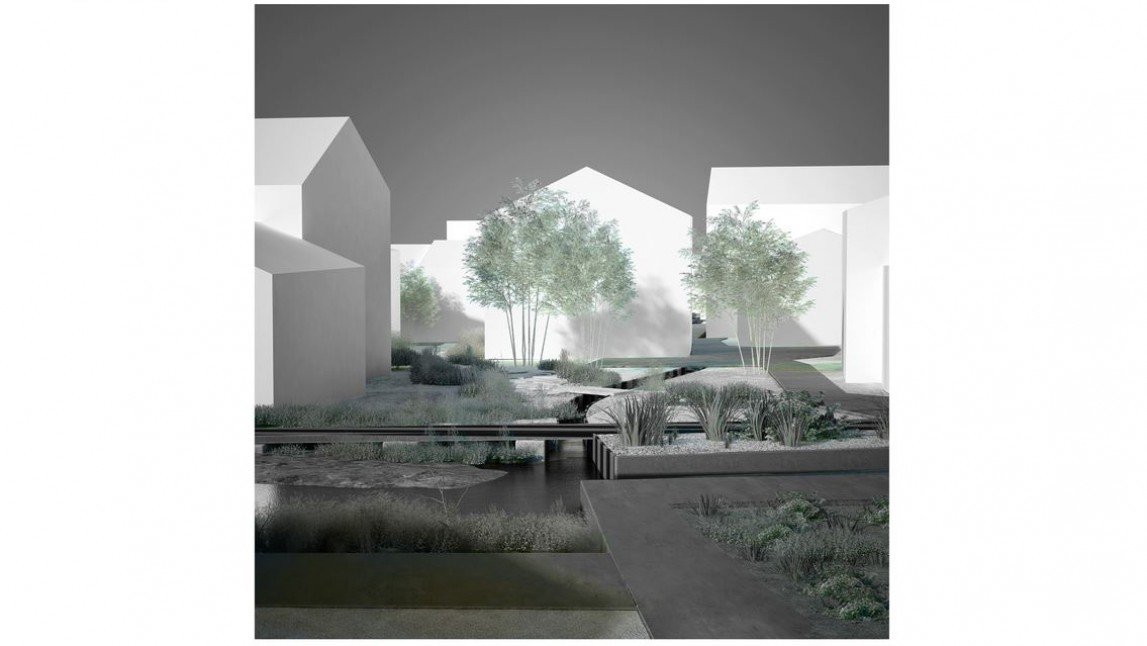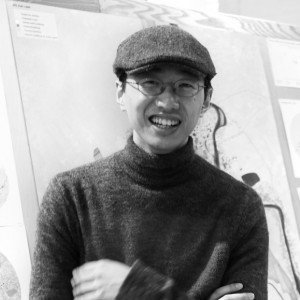According to Chinese student at KADK Wang Yujiao, sustainability is a relatively new concept in terms of advanced technology and eco-friendly materials. However, if you see it in the perspective of building with respect for the terroir and in correspondence with the local environment, then it is a tradition that can be traced 5000 years back to ancient China.
Unfortunately, this tradition has been payed very little attention the last century due to a general reliance on technological innovation in modern societies.
The importance of social sustainability
Wang Yujiao came to Denmark from Hefei in the Anhui province of China to do his master’s degree in ‘Urbanism and societal change’ at KADK, together with an internship at JAJA architects. Yujiao was eager to study in Europe in general because the program is very much rooted in the architectural history and priorities the practical experience, he explains.
At KADK Yujiao has worked particularly with social sustainable architecture: “Social sustainability in architecture is not discussed as much as ecological sustainability but that doesn’t make it less important. As a country, Denmark is a model example of how people engage with and participate in urban and architectural design. My thesis project tries to learn from this Danish experience and use the rural community as a strategy to promote Chinese rural development and improve spatial quality in rural China.”
Projects that can trigger public debate
In Yujiao’s experience, Denmark has a strong tradition for thinking about social participation in relation to sustainable architecture and has a compact construction industrial system. On top of that, the government has clear policies and plans for future sustainable projects based on scientific research:
A cooperation with the society
While China is eager to import and develop new green technologies, especially when faced with the strong pressure of popular opinions about the environmental challenges, China’s biggest problem is the social participation, in Yujiao’s opinion:
“A Recent example is Schmidt Hammer Lassen Architects winning a competition to design the world’s largest waste-to-energy power plant in China. But still China needs social participation instead of continuing traditional top-down conduction by the government,” Yujiao explains.
What China needs is not more cooperation with foreign countries about technological development, but a cooperation between the government and the Chinese society.

Combining social responsibility and technological ‘magic tricks’
That said, Yujiao acknowledges the importance of technological advancement: “In my second semester in KADK, there was a co-workshop with building engineer students from DTU. We experienced how their knowledge and skills on sustainable architecture could help to improve our designs. We learnt some basic principles about airflow, sun radiation, etc. The engineer students can contribute with quantitative analysis and detailed suggestions.”
Yujiao is aware, that although Chinese architects may have a responsibility to design according to the terroir, as ancestors 5000 years back have done it, China still needs an advanced green construction industry like Denmark; “the engineers can help to make our design even more sustainable with their magic tricks,“ he says
When discussing the future of sustainable thinking in architecture, Yujiao is optimistic:
An ever-lasting impression
Like Wang Yujiao, Wang Yang is also doing her masters at KADK in Copenhagen and before she came to Copenhagen she was an exchange student at Oslo School of Architecture, which has made her pretty well versed in the Scandinavian architectural tradition. She has defiantly learned that Danish architecture is much more than Utzon.
Why did you decide to come to Denmark to study?
“People have asked me this question many times, thinking there must be a well-founded reason for coming all this way. As it happened, I had a rewarding experience in an exchange program during my bachelor in CAFA (Central Academy of Fine Arts, Beijing, China, red.). I was an exchange student at Oslo School of Architecture and Design, where I had the opportunity to join B3 studio, taught by professor Per Olaf, who challenged me with his thoughts on architecture and his perspective on the aesthetics in architecture. During that time, I also got to know the Norwegian Architect, Sverre Fehn, who made a great impression on me. It was here I sensed something very romantic and poetic about the Scandinavian architecture. I knew I wanted to go back so Denmark seemed as a ‘new’ way to experience Scandinavia.”
Patience is a virtue
Yang admires that the majority of architectural firms in Denmark have sustainable aims and strategies for creating a better way of life for people in many aspects.
She is also aware that our welfare system is a crucial factor when it comes to sustainable thinking; “When people no longer worry about food and clothing, they make choices to pursue a higher quality of living. When people generally are well educated, they can make reasonable choices.”
Time is of essence, Yang explains, and while China is a country in rapid development, the process of implementing sustainable thinking takes a long time. She draws up an analogy: “suppose there is a decision that needs to be implemented, that has to be decided between five people: we can imagine it will soon be completed. However, when the decision happens among three hundred people, it will definitely take a longer time.”
A team effort
When discussing contemporary architecture in China, she believes in the strength of a group and not just the individual. Like in Japan, where a large group of architects have left a deep mark on the architectural aesthetic – also in the west. She sees a somewhat similar development in China today where collectives of excellent Chinese architects are gradually raising the bar and taking the tradition of Chinese architecture to new levels. Yang mentions Atelier Deshaus, Neri&Hu, Scenic Architecture and TAO as fine examples of the positive development in the field.
Ecological and logical thinking
Where Yang comes from, in the Northeast of China nearby Russia, they have very cold winters. The city, Harbin, is famous for its ice and snow festival. “People make holes in the ice and put lamps inside of it to light the cold winter nights and dress up the dull winter days. You can easily feel the romance and good hopes from the city – what a lovely place!”
Although Yang’s own architecture project is not conceived as a sustainable project, it is in close correspondence with nature and shifting seasons.
Creating a space for rituals in harmony with nature
Yang’s architecture project is a cemetery in close correspondence with nature, shifting seasons and defined houses she creates a specific environment for people to express their grief and simultaneously refine the rituals from Chinese traditional culture;
“At traditional Chinese funerals, mourners have several rituals after the death of their relatives which they must perform. However, most of the cemeteries nowadays do not consider this. This means, that there is no specific place for mourners, and only random places for rituals.”

In her project, Wang creates two houses – one for the mourners and one for the dead and the entire landscape surrounding it.
“Some sadness and grief can only be released in certain circumstances. In the West, there is always a church beside a cemetery – take this as an example of a specific space for the mourners and their needs. In the house for the dead, there are several rituals that need to be performed, and the most important one will be repeated many times every year. As to the whole landscape, choosing the diversity of flower fields and tree forest, sensing the different atmospheres, addressing the orientations in the cemetery is a way of creating a landscape of remembrance.”

The future of sustainable architecture
Generally, Yang believes that sustainable architecture has a responsibility to bring around a certain influence, for example to strengthen people’s communal consciousness and the aesthetic in living. She also emphasizes the point that sustainable architecture has been discussed for several decades and probably will become imperceptible to us, being an integrated part of architectural thinking and no longer a particular and specific concept.
What are your reflections on sustainable architecture these years – what are the most important issues and innovations?
“I suppose it is the aging society, which is more likely to be referred to in many aspects – it is a very important issue that we need to face. As to architecture, it needs to be concerned with specific groups, meeting the needs of society, and figure out better ways to deal with elderly people. Facing the new challenge, as I heard, many parts of China start to do more research and studies, choosing to cooperate with experienced companies or governments, or learn from other countries about better sustainable architecture for aging communities, like Denmark.”


Wang Yujiao & Wang Yang
Written by Tanne Schlosser Søndertoft

